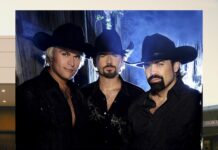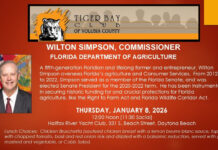139 years ago the first Labor Day was celebrated. Labor looks a bit different today than it did in 1882, but ask anyone when the last time they had a full day off from work, or a meaningful day off from work and you may find them scratching their heads to remember.
The United States rounds out the Top 10 in overworked countries according to Organization for Economic Co-operation and Development (OECD), alongside nations like Mexico and South Korea, with 11.1% of Americans working more than 50 hours per week.
So as we recognize Labor Day this Monday, here are a few fast facts on how this national ‘day off’, came to be, and a few fun facts that if you’re working today too, may give you a giggle.
Who invented Labor Day?
Rumor has it, Peter J. McGuire, a carpenter and labor union leader, was the person who came up with the idea for Labor Day. He thought American workers should be honored with their own day. He proposed his idea to New York’s Central Labor Union early in 1882, and they thought the holiday was a good idea, too.
Read More
The Other Maguire
When was the first Labor Day and Why?
The Very First Labor Day
September 5, 1882
The very first Labor Day was held on a Tuesday, September 5, 1882, in New York City. The day was celebrated with a picnic, concert and speeches. Ten thousand workers marched in a parade from City Hall to Union Square.
Soon after that first celebration, the holiday was moved to the first Monday in September, the day we still honor. Congress passed legislation making Labor Day a national holiday in 1894. Labor Day is not just a day to celebrate the accomplishments of workers; for some people, it is also a day to talk about their concerns and to discuss ways to get better working conditions and salaries.
Read More
Colorful Commentary – New York Daily Tribune: September 7, 1882
When Did the U.S. Government formally recognize Labor Day?
On this date, President Grover Cleveland signed S. 730 into law declaring Labor Day a national holiday. Since 1882, Labor Day had been celebrated at the local and state level. From 1887 to 1894, 23 states enacted a Labor Day holiday. But according to the Washington Post, the celebration alternated between the first day of September, the first Monday of September, and the first Saturday of September depending on the location. After being introduced in August 1893, S. 730 sat for ten months without debate in the Senate. Once Senate leaders brought it to the floor, however, the bill quickly passed. Four days later, on June 26, 1894, the Chairman of the House Labor Committee, Lawrence McGann of Illinois, began consideration of the Senate bill in the House, replacing an earlier House version sponsored by Amos Cummings of New York. The legislation passed with no objection and was sent to the President.
Read More
What’s the deal with wearing white after Labor Day?
This old tradition goes back to the late Victorian era, where it was a fashion faux pas to wear any white clothing after the summer officially ended on Labor Day. The tradition isn’t really followed anymore. EmilyPost.com explains the logic behind the fashion trend – white indicated you were still in vacation mode at your summer cottage.
Read More Labor Day Fun Fast Facts
Did you know? Labor Day Marks the End of Hot Dog Season. How will you be cooking yours today?
A new survey commissioned by the National Hot Dog and Sausage Council (NHDSC) and The North American Meat Institute, a contractor to the Beef Checkoff, showed that 73 percent of Americans believe that a cookout is not complete without hot dogs. After all, hot dogs are an important part of American culture, summer celebrations, travel and grilling traditions. During the peak season from Memorial Day until Labor Day, Americans enjoy an estimated seven billion hot dogs.
There are, of course, many ways to cook a hot dog, but the survey showed that most Americans prefer their hot dogs straight off the grill. In fact, 75 percent say grilling is their favorite way to cook a hot dog, far exceeding other cooking methods such as over a campfire (9 percent), boiling (6 percent), steaming (3 percent), frying in a pan (2 percent), or microwaving (2 percent).
Get More Labor Day History Straight from the Horse’s Mouth.
Featured Photo: U.S. Department of Labor













































